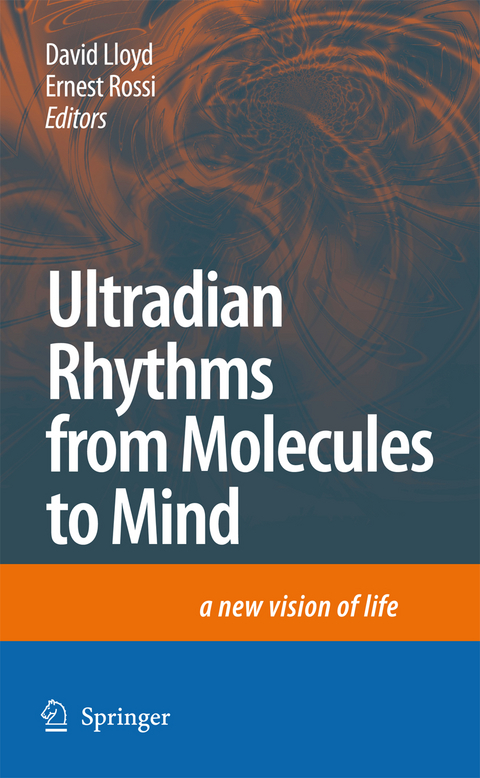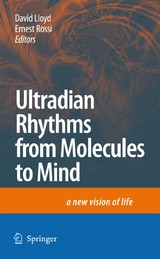Ultradian Rhythms from Molecules to Mind
Springer-Verlag New York Inc.
978-1-4020-8351-8 (ISBN)
The Molecular-Genetic-Cellular Level.- The Ultradian Clock (~40 min) in Yeast (Saccharomyces cerevisiae).- ENOX Proteins, Copper Hexahydrate-Based Ultradian Oscillators of the Cells’ Biological Clock.- Self-Organized Intracellular Ultradian Rhythms Provide Direct Cell-Cell Communication.- Phosphorylation Dynamics in Mammalian Cells.- Is There a Mitochondrial Clock?.- Invertebrate Systems.- Ultradian and Circadian Rhythms: Experiments and Models.- Ultradian Lovesong Rhythms in Drosophila.- Mid-range Ultradian Rhythms in Drosophila and the Circadian Clock Problem.- Tidal Rhythms.- The Neuroendocrineal and Developmental Level.- Pulsatile Hormone Secretion: Mechanisms, Significance and Evaluation.- Ultradian Rhythms as the Dynamic Signature of Life.- The Mammalian Circadian Timekeeping System.- Ultradian and Circadian Rhythms in Human Experience.- Ultradian Cognitive Performance Rhythms During Sleep Deprivation.- High Frequency EEG and Its Relationship to Cognitive Function.- Total Sleep Deprivation and Cognitive Performance: The Case for Multiple Sources of Variance.- Open Questions on Mind, Genes, Consciousness, and Behavior: The Circadian and Ultradian Rhythms of Art, Beauty, and Truth in Creativity.- Genes, Sleep and Dreams.- Epilogue: A New Vision of Life.
| Zusatzinfo | X, 450 p. |
|---|---|
| Verlagsort | New York, NY |
| Sprache | englisch |
| Maße | 155 x 235 mm |
| Themenwelt | Studium ► 1. Studienabschnitt (Vorklinik) ► Physiologie |
| Naturwissenschaften ► Biologie | |
| ISBN-10 | 1-4020-8351-3 / 1402083513 |
| ISBN-13 | 978-1-4020-8351-8 / 9781402083518 |
| Zustand | Neuware |
| Haben Sie eine Frage zum Produkt? |
aus dem Bereich




